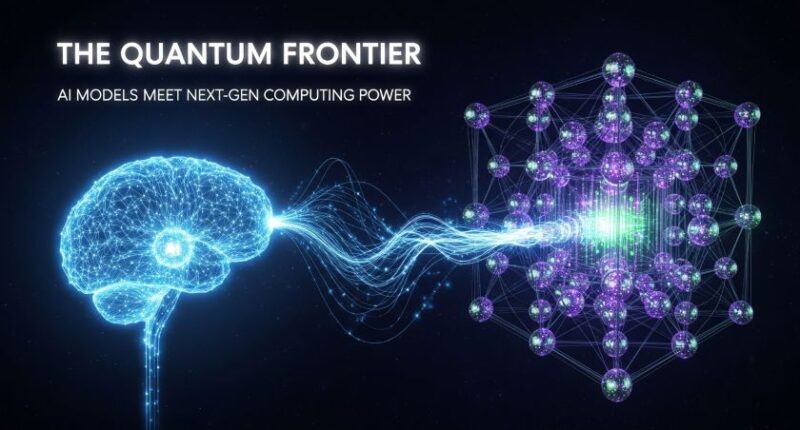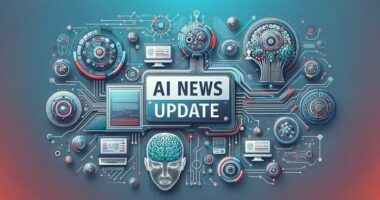Artificial Intelligence has now reached a crossroads where innovation is no longer measured by model size alone, but by how efficiently those models interact with the computing substrate beneath them. In late 2025, the spotlight turns to quantum-enhanced AI, hybrid cloud infrastructure, and real-time multimodal systems that bring creativity, reasoning, and execution together in one loop.
As the AI industry enters its most transformative phase since ChatGPT 4.0, every company — from startups to hyperscalers — is rethinking its compute, governance, and deployment strategy. Let’s explore how quantum computing, hybrid architectures, and generative autonomy are redefining the AI landscape.
Quantum-Accelerated AI: When Entanglement Meets Efficiency
For years, quantum computing was more theoretical promise than practical tool. But 2025 has changed that. IBM Quantum, D-Wave, and PsiQuantum have each unveiled commercial quantum nodes capable of running hybrid AI workloads at petascale speeds.
Why It Matters
-
Speed × Parallelism — Quantum systems can process vast state spaces simultaneously, dramatically reducing time for optimization and simulation problems.
-
Energy Efficiency — Quantum circuits minimize heat dissipation, offering greener computation for training and inference.
-
Algorithmic Leap — Hybrid classical-quantum AI algorithms (like QML 4.5) are already outperforming conventional deep-learning methods on pattern-recognition and generative-model tuning.
In sectors like drug discovery, logistics, and financial modeling, early adopters report 10× gains in training efficiency. For AI model developers, this means one thing: compute bottlenecks are shifting from hardware to architecture design.
The Rise of Hybrid AI Infrastructure
AI infrastructure in 2025 is a patchwork of edge, cloud, quantum, and on-prem compute nodes orchestrated by AI itself. Major cloud vendors — AWS, Microsoft Azure, and Google Cloud — are integrating “Quantum as a Service” layers directly into their ML pipelines.
Key Transformations
-
Compute Fluidity: Workloads shift dynamically between GPUs, NPUs, and QPUs depending on latency, power, and cost.
-
Data Locality Awareness: Smart routing ensures data is processed closest to source, reducing carbon footprint.
-
AI-Driven Optimization: Autonomous load balancers monitor model inference and reallocate tasks in real-time.
For enterprises, this evolution means deploying AI that manages AI — autonomous infrastructure that scales or throttles resources automatically.
Strategic Takeaway
Businesses must redesign their architecture for hybrid orchestration, not monolithic deployment. The companies that master “fluid compute” will dominate the next five years of AI productivity.
Generative Autonomy: When Models Think, Decide, and Act
2025 also marks the maturation of agentic systems — AI models that don’t just respond, but plan, act, and adapt.
From Adobe’s new AI Assistant inside Creative Cloud to OpenAI’s “Atlas Browser” prototype, these systems signal a new paradigm: goal-driven AI ecosystems.
Real-World Applications
-
Creative Workflows: Designers use AI copilots that iterate autonomously, combining prompts, feedback, and trend data into full campaign packages.
-
Enterprise Operations: Procurement, scheduling, and HR now feature “AI executors” that run routine tasks end-to-end.
-
Finance & Logistics: Agents predict, negotiate, and execute — everything from shipment planning to dynamic pricing.
Ethical & Governance Challenges
With autonomy comes accountability. The big question: who’s responsible when an AI agent makes a wrong call?
To manage risk, forward-thinking firms are establishing agent oversight layers — transparent logs, sandboxed permissions, and human approval checkpoints before execution.
AI Governance Enters the Quantum Era
As computational power grows, so does the need for trust frameworks. Governments and corporations are moving beyond voluntary guidelines into auditable, machine-readable governance.
Key Initiatives
-
EU AI Trust Framework 2.0 introduces real-time compliance APIs for AI deployment.
-
U.S. National AI Compute Charter mandates sustainability disclosures for high-compute models.
-
Asian AI Alliance sets regional standards for cross-border data exchange and model transparency.
Why Governance Is Now Competitive Advantage
Regulation is no longer just compliance — it’s credibility. Brands that demonstrate transparent, sustainable AI pipelines attract both customers and investors.
What’s Next: Quantum + Generative Convergence
The next twelve months could bring the first quantum-native generative model — one that learns, compresses, and generates across superposition states.
This convergence will make AI exponentially more creative and context-aware.
Strategic Forecast
-
Hardware Integration: Expect GPUs, TPUs, and QPUs in single modular clusters.
-
Cost Curve Flattening: Quantum efficiency will drive inference costs down another 40–60 %.
-
Data Security Evolution: Quantum encryption and AI audit trails will become standard practice.
Action Plan for Leaders
-
Experiment Now: Run pilot AI workloads on quantum-hybrid simulators.
-
Redesign Governance: Integrate transparency APIs and model-audit systems.
-
Invest in Talent: Recruit cross-disciplinary engineers fluent in both quantum theory and AI architecture.
-
Prioritize Sustainability: Low-power quantum systems align with global ESG mandates.
Final Thoughts
October 2025 will be remembered as the month when AI crossed the light barrier — literally and figuratively.
With quantum acceleration, hybrid orchestration, and agentic autonomy converging, artificial intelligence is entering its most creative and self-optimizing era.
Those who adapt their strategy to this triad — Compute × Autonomy × Governance — will lead the decade ahead.
For everyone else, the future will arrive faster than expected—and it will already be automated.









